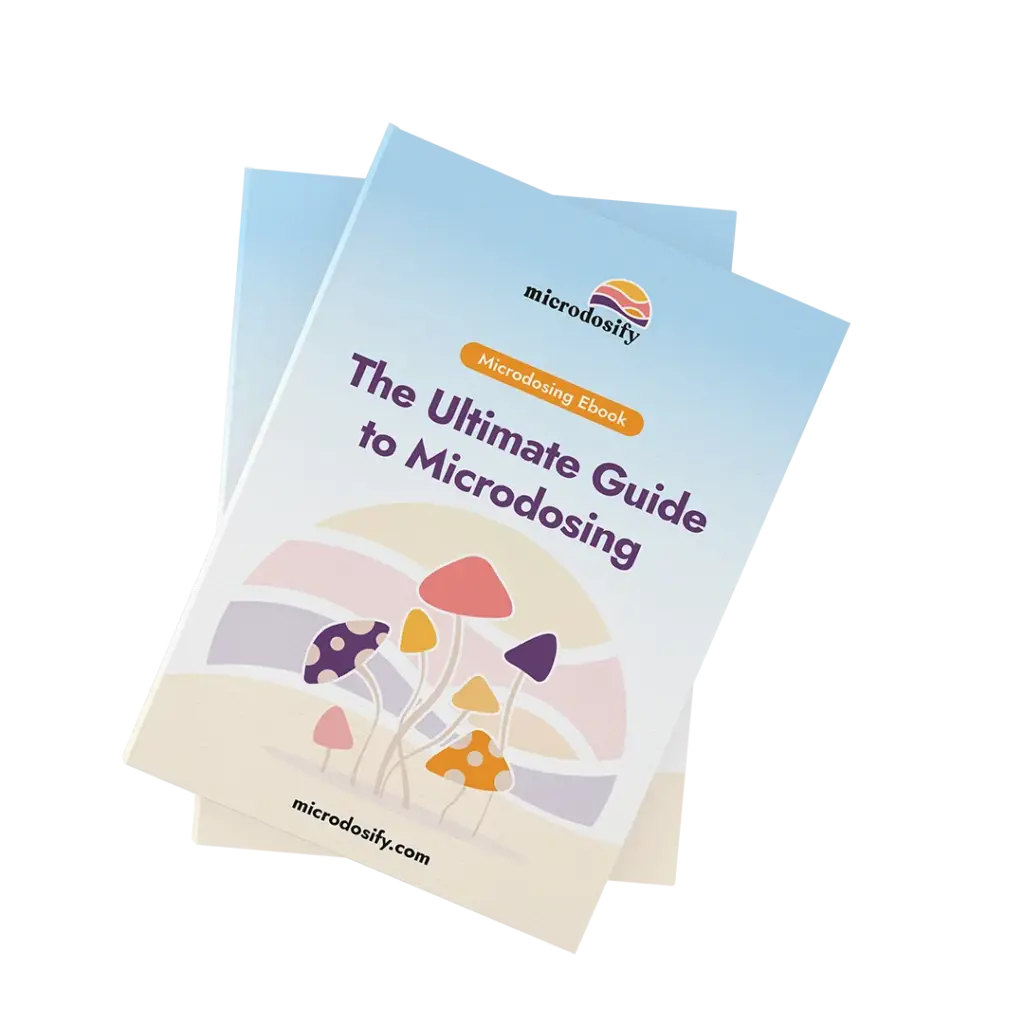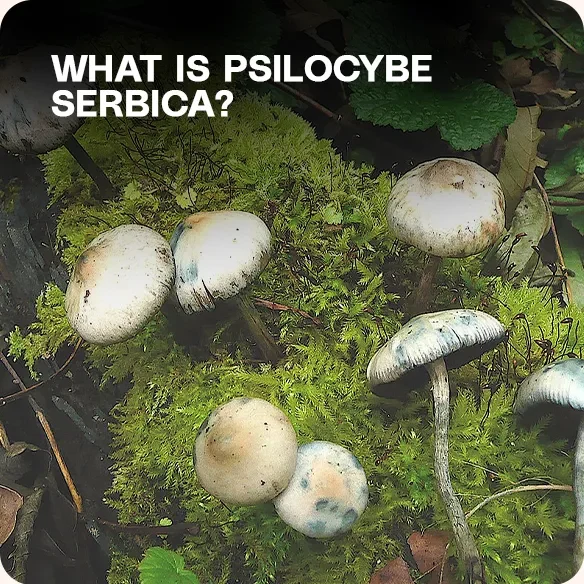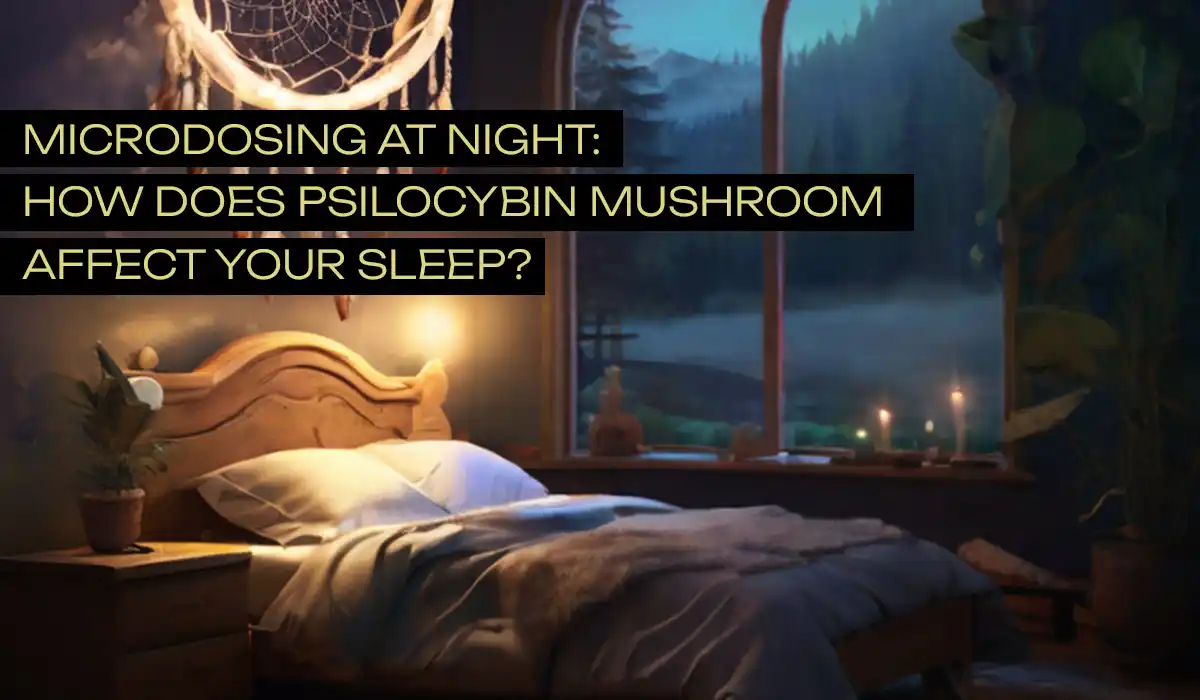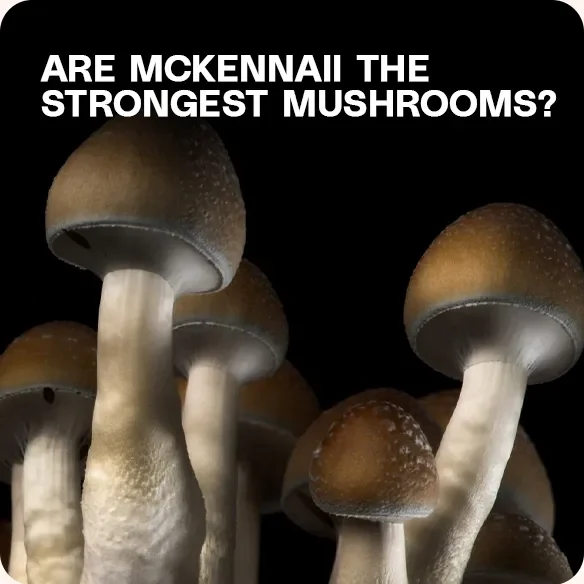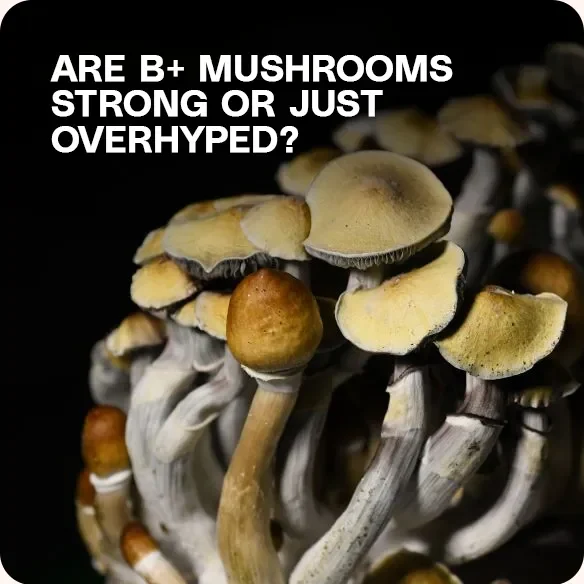If you’ve ever searched for Psilocybe serbica, you’ve probably seen other names pop up too—Psilocybe bohemica, Psilocybe arcana, even Psilocybe moravica.
Psilocybe serbica was first described in 1969 by Austrian mycologists Meinhard Moser and Egon Horak.
Later on, Czech mycologist Jan Borovička and others gave similar mushrooms new names, thinking they were different species.
But in 2011, Borovička led a DNA study that confirmed they were all the same mushroom. The name Psilocybe serbica stuck, since it came first.
So, what makes this mushroom worth learning about?
Well, for one, it’s native to Europe and can be surprisingly potent—stronger than many Psilocybe cubensis strains.
It also grows in the wild, sometimes right in urban parks and forests, which gets the attention of curious foragers and trippers alike.
In this guide, we’ll break down where Psilocybe serbica grows, what it looks like, how strong it is, how it compares to other mushrooms, and whether it’s safe for microdosing or tripping.
If you’ve ever wondered whether that little brown mushroom in your forest walk might be something special—this one’s for you.
What is the difference between Psilocybe serbica and Psilocybe bohemica?
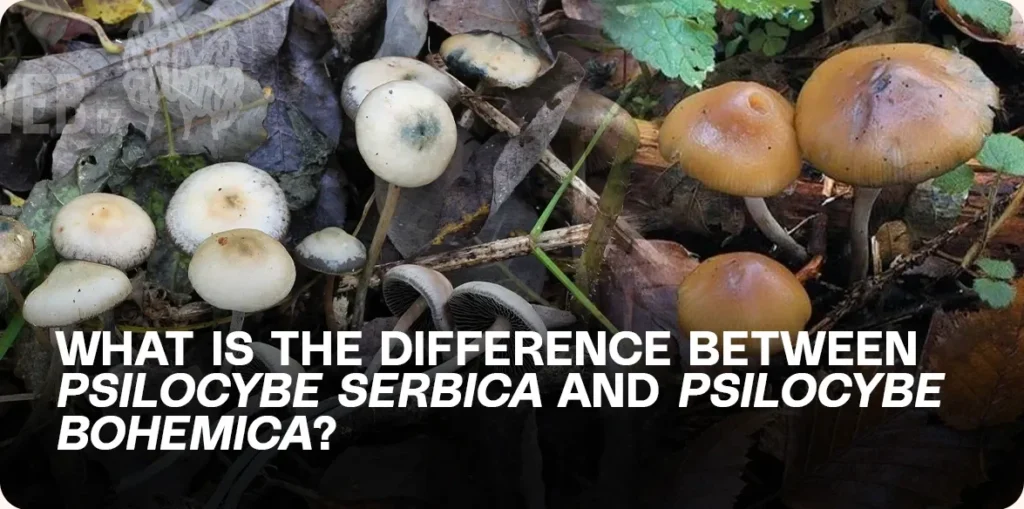
At first, Psilocybe serbica and Psilocybe bohemica were thought to be different mushrooms.
They were found in different places—P. serbica in Serbia and P. bohemica in the Czech Republic—and had slight differences in shape and size. So, mycologists gave them separate names.
But in 2011, Czech mycologist Jan Borovička led a DNA analysis comparing them.
What he found was that they were genetically the same species. The differences in size, cap shape, or color were just natural variations—kind of like how people look a little different, but are still human.
Since Psilocybe serbica was the first name published (in 1969 by Moser and Horak), that’s the one that stuck. Psilocybe bohemica, arcana, and moravica are now considered the same species—just different-looking versions of P. serbica.
So yes, they’re the same mushroom with different labels that were eventually merged into one.
Where does Psilocybe serbica like to grow?
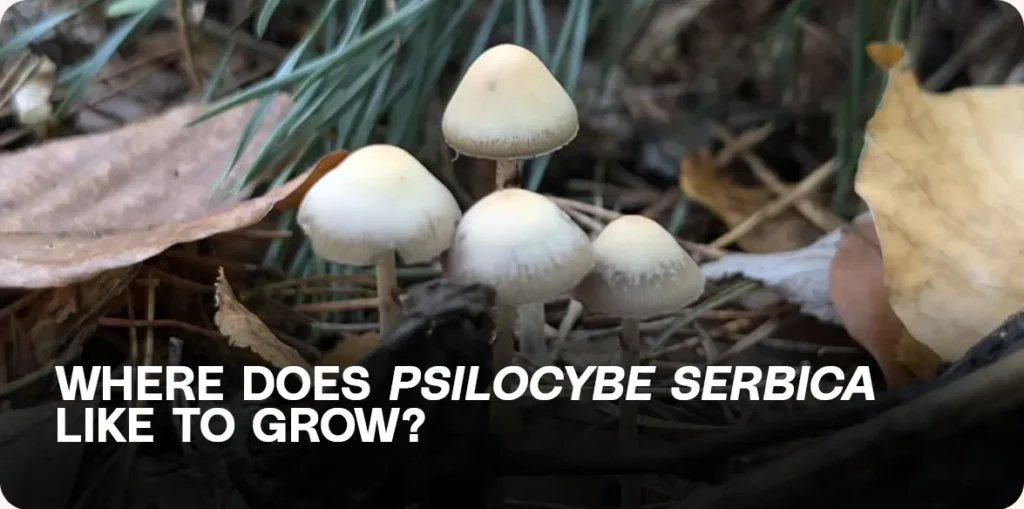
Psilocybe serbica loves cool, damp places.
It usually pops up in decaying wood, leaf litter, and forest debris—especially in coniferous and mixed forests.
Unlike some magic mushrooms that grow in open fields or dung, P. serbica prefers shady, wooded areas where there’s a thick layer of rotting leaves, twigs, and bark.
It’s been found on fallen branches, buried wood, and old tree stumps.
It doesn’t usually show up in gardens or in wood chips near sidewalks like some other species do.
Psilocybe serbica grows best in damp, mossy forests with decaying wood, especially in coniferous or mixed woodlands.
Which countries can you find Psilocybe serbica in?
You’ll mostly find Psilocybe serbica in Europe. It’s found in Serbia, Slovakia, Czech Republic, Austria, Germany, Croatia, and Poland.
So far, it hasn’t been found growing wild outside Europe.
It’s not a global mushroom like Psilocybe cubensis or Panaeolus cyanescens.
If you’re outside of Europe, especially in North America, chances are you won’t run into P. serbica in the wild.
When is the right season to find Psilocybe serbica?
The best time to find Psilocybe serbica is autumn, from late September to early December.
It thrives after a few days of rain, especially when daytime temps are around 10–15°C (50–60°F) and nights are cooler.
It doesn’t like dry or hot conditions, so don’t expect to see it in summer.
You might still spot a few in early winter if the frost hasn’t fully set in, but fall is definitely peak season.
So if you’re in the right forest at the right time, keep your eyes on the forest floor—Psilocybe serbica might just be hiding under the leaves.
What Does Psilocybe serbica Actually Look Like?
Psilocybe serbica isn’t huge, but it stands out once you know what to look for.
It changes color depending on the weather and bruises blue when handled, which is a good sign it contains psilocybin.
Here’s a quick breakdown:
- Cap: 1–4 cm wide, dark brown and shiny when wet, dries to a lighter yellow-brown. Often has a small bump (umbo) in the middle.
- Stem: Up to 9 cm tall, thin, pale, sometimes a little yellow or white near the base. It can look fibrous or slightly shiny.
- Gills: Start pale, then turn dark brown to purple as the mushroom matures.
- Spore print: Dark purple-brown.
- Bruising: Yes. It bruises blue, especially on the cap or stem when touched or damaged.
What Mushrooms Look Similar to Psilocybe serbica?
There are a few mushrooms that can easily be mistaken for Psilocybe serbica, especially if you’re new to foraging or not paying close attention. The most dangerous one is Galerina marginata.
It grows in similar spots, has a brown cap and stem, and is about the same size—but it’s deadly.
Galerina doesn’t bruise blue and has a rusty brown spore print, not the dark purple-brown of serbica. It also often has a ring on the stem, which serbica usually doesn’t.
Another one people confuse it with is Hypholoma.
These mushrooms also pop up in the fall and grow on wood, but they tend to show up in clusters and don’t bruise blue either. Their spore prints are also more greenish or dull brown, not that deep purple.
To tell them apart safely:
- Always check for blue bruising. That’s your biggest clue.
- Take a spore print—Psilocybe serbica prints dark purple-brown.
- Look at the stem. If you see a ring, be extra cautious.
- And if you’re unsure, don’t eat it. Snap a photo, post it in a mushroom ID group, and wait. Better safe than sorry.
How Strong Is Psilocybe serbica?
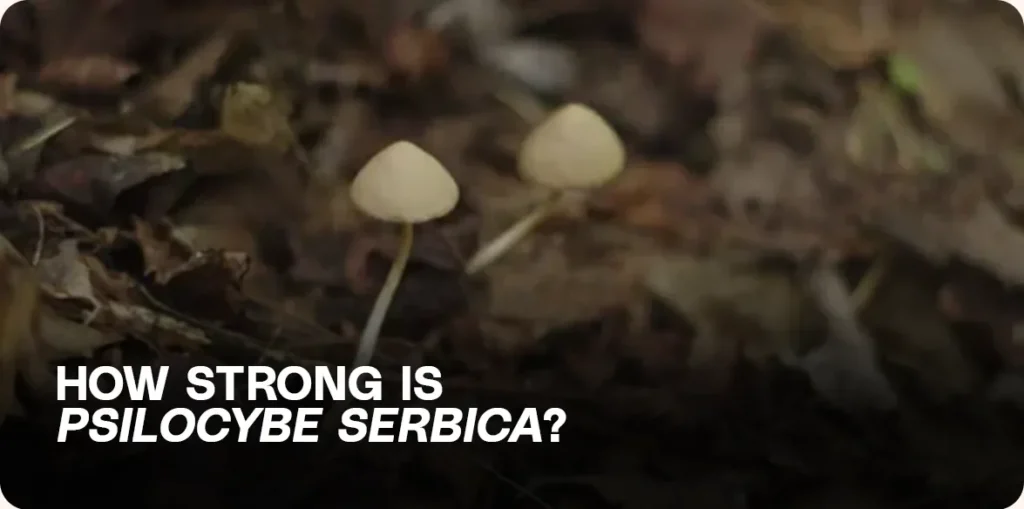
Psilocybe serbica is no lightweight. In fact, it’s one of the strongest psilocybin mushrooms ever tested in the wild.
- Psilocybin content: Depending on the variety and growing conditions, it can contain anywhere from 0.5% to 1.95% psilocybin. That’s high—on par with or even stronger than Penis Envy and Psilocybe azurescens in some cases.
- Other tryptamines: It also contains smaller amounts of psilocin and baeocystin, which add to the overall trip.
So yes, this is a powerful mushroom. If you’re used to strains like Golden Teacher or B+, Psilocybe serbica might hit much harder, even at lower doses.
Always start low if you’re unsure. Since potency can vary even within the same patch, a little goes a long way.
Can You Microdose Psilocybe serbica?
You can microdose Psilocybe serbica, but you have to be extra careful with the amount.
It’s much stronger than strains like Golden Teacher or B+, so even a small dose might be too much if you’re not careful.
- A microdose is usually 0.1g to 0.3g of dried mushrooms.
- With Psilocybe serbica, it’s better to start at the low end—0.05g to 0.1g is often enough.
Because it’s hard to know exactly how strong each batch is, weighing your dose with a precision scale is a must.
If you want something easier to manage, a milder strain like Golden Teacher might be better for beginners.
But if you’re comfortable with adjusting your dose and know what you’re working with, Psilocybe serbica can definitely work for microdosing.
Can You Grow Psilocybe serbica at Home?
Yes, but it’s not as easy as growing cubensis.
Psilocybe serbica prefers colder temperatures and wood-based substrates, so the setup is a bit different. Here’s how to do it, step by step:
- Get spores or liquid culture
You’ll usually find them from European vendors. Spores are legal in some places, but harder to get than cubensis. - Inoculate grain jars or bags
Use rye, millet, or wheat berries. Sterilize the grains, inject with spores or culture, and keep them at room temp (around 21–24°C or 70–75°F). - Wait for colonization
The grains will turn white with mycelium. This can take 3 to 5 weeks. Be patient. - Make the bulk substrate
Use wood chips or hardwood sawdust. You can add straw or cardboard too. Pasteurize the mix with hot water. - Mix spawn and substrate
Once the grain is fully colonized, mix it evenly with the wood-based substrate. Use a tub, bag, or outdoor bed. - Let it colonize again
Put it somewhere cool and shaded. Wait another 2–3 weeks for the mycelium to spread through the wood. - Cold shock to trigger fruiting
Lower the temp to around 10–16°C (50–60°F). You can do this by moving it outside in the fall or using a cold room. - Keep it humid
Mist lightly if needed and make sure it gets fresh air. A plastic lid with holes or outdoor airflow works fine. - Harvest when ready
Mushrooms are ready when the cap opens and the veil breaks. Pick gently and dry them right away.
That’s it. It takes time and cooler temps, but if you’ve grown before and want to try something different, Psilocybe serbica can definitely work.
Conclusion
Psilocybe serbica is one of those mushrooms that doesn’t get talked about much—but it probably should.
It’s strong, local to parts of Europe, and often confused with other species, which makes it easy to miss or misidentify. But once you know what to look for, it stands out.
It’s not as beginner-friendly as strains like Golden Teacher or B+, especially when it comes to cultivation, but for wild foragers or people looking for a natural, wood-loving mushroom with serious kick, Psilocybe serbica is worth paying attention to.
So yeah—next time you’re walking through a forest in the right season, especially in Europe, keep an eye out. You might be standing right next to one and not even know it.
